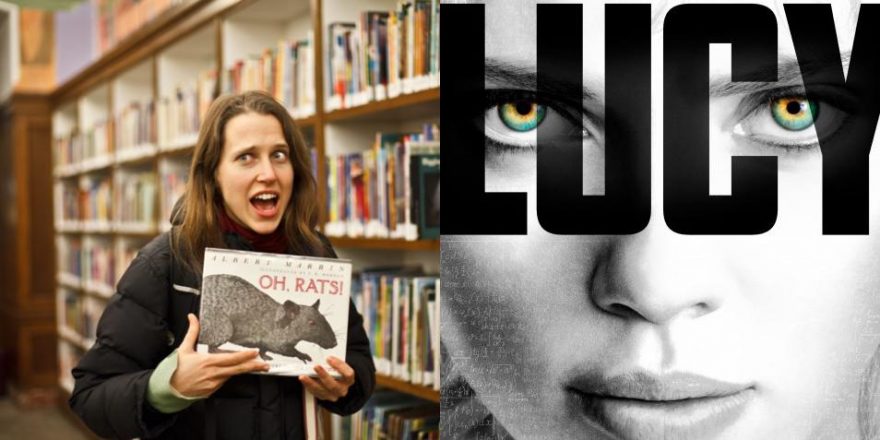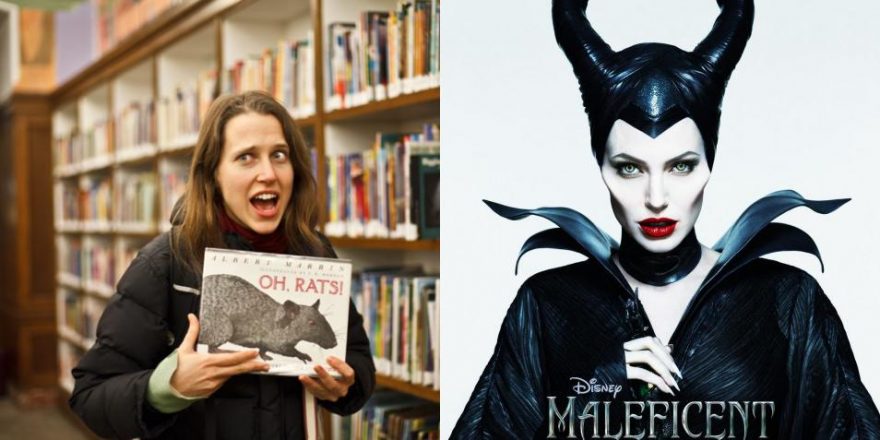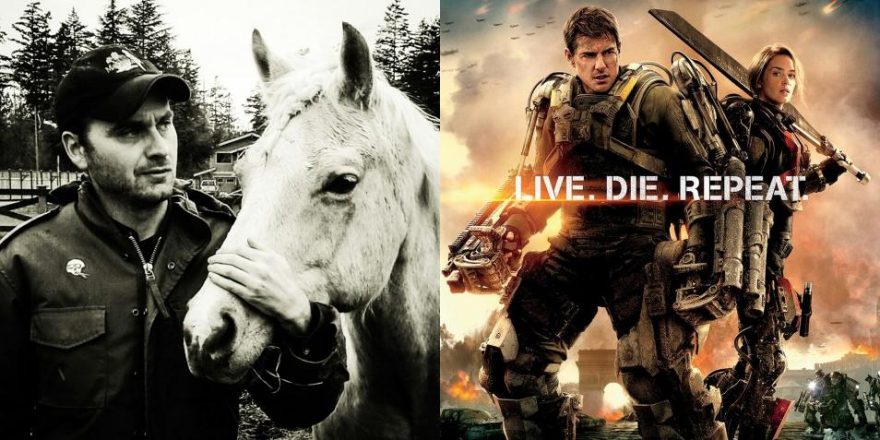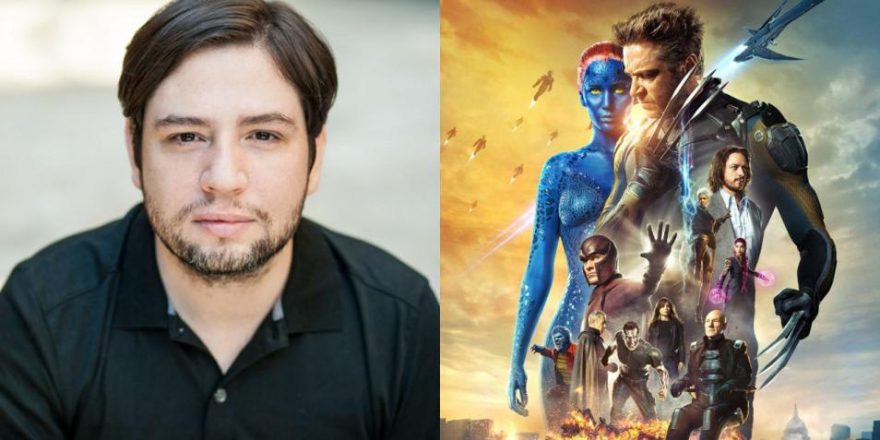“Art poses a question, the response to which brings you closer to God.”
I came up with this definition of art last week during a long conversation with a French-speaking Montrealer who had seen my new film, Thou Wast Mild and Lovely, at the Fantasia International Film Festival. “When I walked out of your film, it was not over,” he said. “I will have to keep thinking about it.”
You will have to keep thinking about Luc Besson’s Lucy. And although I originally took the Montrealer’s statement as an unintended compliment, after my Lucy viewing I understand more deeply the complicated nature of a film that opens up a spiritual conversation but leaves you guessing.
For instance, it’s three in the morning and you’d really like a good night’s sleep, and your boyfriend turns to you and says, “All of our wisdom traditions would say that reaching a higher state of consciousness is about utterly letting go of control, about pure acceptance. But with Lucy, the smarter she gets, the more she exhibits exacting control over the world around her – people, computers, everything.”
My dazed response: “Well, Lucy doesn’t claim that having access to more of your brain is a spiritual experience.” While Besson’s Lucy – which stars Scarlett Johannson as a woman who, thanks to a strange new drug, begins using 20 percent, then 30 percent, then much more of her brain – opens up a conversation about transcendence, it also argues that accessing a lot more of your brain may be decidedly unspiritual.
Lucy is super fun. It’s bright and brilliant from the beginning. The editing is quick, intelligent and unusual, the opening visuals are thrilling and you feel from the first moment that you are in the hands of a great director. I love Luc Besson’s films. I have done ever since Natalie Portman showed up at Gary Oldman’s office to kill him in The Professional, ever since Milla Jovovich, with orange hair and a white-strap jumpsuit, sailed out of a building in The Fifth Element. And Lucy has Besson’s staples: guns leaping out of a back pocket in slow-motion towards a visceral, unstoppable goal; life barreling towards a meaningful climax.
But the weird part is that the thing the film appears to be critiquing – our modern obsession with violence, marked control, lack of connection to our bodies and to others – is also what the film is founded on, and what makes it fun. Lucy’s becoming smarter makes her a badass criminal. She’s able to intimidate or coerce with her new skills, her lack of pain, etc. And if you don’t cooperate? She can just change your mind with her mind. But when the victim becomes as bad as the bad guys, is that… good? Is that what accessing all of your brain’s power is about?
In an epic but confusing car chase, Lucy barrels through streets, overturning vehicles, causing cop cars to smash into one another and racing alongside sidewalks so that citizens have to leap out of her way. At around the moment when you’re like, “Wait, isn’t she supposed to be sort of a superhero? But she’s… killing a lot of people so she can get to… drugs?” the policeman she’s taken hostage (Amr Waked) voices exactly the same concerns.
Her response? “We never die.”
OK, but living with a maimed leg because Lucy’s car just ran over you isn’t exactly an end to suffering.
I would argue that Batman is our most successful superhero series because Batman’s just a guy – Bruce Wayne – who’s smart, well-intentioned, exercises a lot, and is just as fallible and vulnerable as you or I. Every time he enters a fight, the stakes are life and death. But when Lucy gets hit by a bullet in the shoulder, she exhibits no change in her range of motion, suffers no disability at all. She just pulls the bullet out with her hand. So when a character can do basically anything and not get hurt, how do we care about her?
Well, maybe the stakes of the film have little to do with human emotion. In fact, the film’s ending is surprising and magical, perhaps precisely because this film isn’t about falling into the arms of a lover or about making up with your best friend, but about transcendence of the self.
Besson makes some smart moves to ground us in an emotional connection to his character. In the opening scene between Lucy and Richard (the uncouth boyfriend who gets her into the drug mess that precipitates her increase in brain power), so much of Johannson’s wit, style and unique energy come through. She embodies this character, an off-hand but bright young student who gets that her boyfriend is maybe not a great influence but is sticking with him anyway. Besson also offers us a beautifully intimate conversation between Lucy and her mother right after she takes the hit to the guts that allows her brain to expand. Lucy recalls her childhood with vivid, poetic detail and thanks her mother for “the 10,000 kisses I can still feel on my face.” This is one of the most elegant scenes in the movie and was probably my favorite part, because after that, Lucy gets so invincible as to become… well, less interesting than she used to be.
Let’s talk science for a second.
We only use 10 percent of our brains: MYTH. (Wired‘s Christian Jarrett wrote recently, “Modern brain scans show activity coursing through the entire organ, even when we’re resting.”)
We aren’t accessing our whole brain all the time: TRUE.
So the exciting question: What isn’t being used?
A few years ago, I co-directed a doc, Bi the Way, in which I investigated human sexual evolution, and during that time I also helped write a play about the brain. For both projects, I went pretty deep into brain theory, so here are some fruits of that labor.
According to triune brain theory, a theoretical system used by many neuroscientists and psychologists to examine how our brains affect our behavior, we have three major areas of the brain. The lizard brain, the oldest part, governs fight and flight responses, lust, hunger and our basic human needs. The mammalian/limbic brain, which developed when mammals began to bear live young and needed to be able to develop a bond deep enough to see those offspring into maturity, governs our emotionality and connections to others. And the neocortex, our “thinking cap,” allows us language, abstraction and planning.
The human brain slowly became highly developed over the course of our evolutionary history, so humans share brain traits with lizards, dogs, chimps and possibly the earliest living things. Compared to other mammals, humans have a very large (relative to brain size) neocortex.This sets us apart from them in certain ways, including our ability to travel mentally into the future or the past – and, in fact, we live much of our lives there.
But the neocortex is also constantly inhibiting other parts of the brain. In Oliver Sachs’ seminal studies on brain abnormalities, he discovered that when some parts of our neocortex shut down, new “talents” appear, in the form of access to aspects of our brain that we typically associate with other creatures. Injured or overdosed subjects unlocked parts of their brains that had been closed out by the powerful neocortex.
In The Man Who Mistook His Wife for a Hat, Sachs notes that one medical student, after a particular cocaine high, could recognize 20 patients and their emotions by smell alone, and more exactly than if he could see their faces.
In Lucy, Johannson’s character unlocks a similar intuition, but without a grounding in the present, a deep insight but without a liberation into being. She can discern the inner life of trees, but she is more focused on how to decipher which one of these cellphone strands is the Koreans calling the hospital where the illegal, brain-altering drugs are.
I would have thought that a human with access to 80 or 90 percent of her brain would behave more like Gandhi than Mao, but Lucy is a bit of a dictator by the end of the film. Movies have to sell tickets, I guess, and hugs probably don’t go as far at the box office as bullets, but for narrative purposes, if other people’s lives have no value, and if Lucy can’t get hurt, why care if she can levitate five Koreans?
At this point, I’ll pause and say it’s clear that Besson’s film passes the test of being art. Lucy struck up a conversation inside of me that continued long after I left the theater, and that engagement is a much deeper success than a movie that ties up every loose knot.
Plus, while watching Lucy, every time I thought,“Wait, Besson has literally built the film around an idea that robs each of the events I’m seeing of any emotional stakes,” he would repeatedly do something so surprising and original that I was shaken right back into the film.
And maybe Besson is pushing us in this direction.
Unlike Under the Skin, in which Scarlett Johannson’s character grows more and more human, developing more and more of a personality, Lucy – with its heroine’s all-knowing, computer-like, pain-resistant abilities – does exactly the reverse. Is Besson therefore offering us an enormous and unusual critique, or a discovery, or a lesson?
Superhumans have cool powers, but isn’t it nice just to be yourself?







